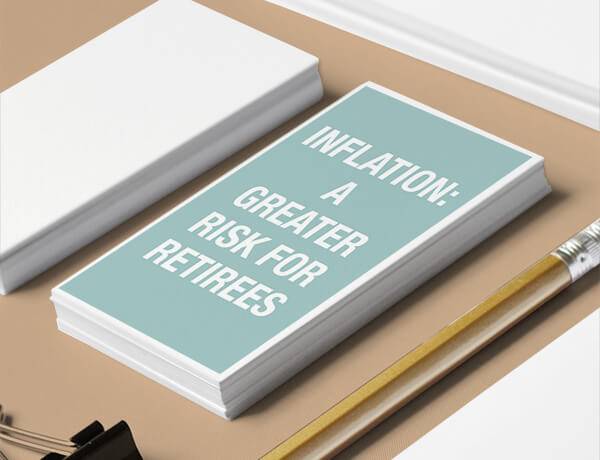Please provide your information and submit this form. Our team will be in touch with you shortly.
Inflation sometimes seems like one of those afflictions of an era long since passed into the history books. While it’s true that double-digit inflation has been absent for the last 30 years or more, you may remember the high inflation years of the 1970s.¹
Will the levels of U.S. public debt and loose monetary policy revive the inflation rates of yesteryear? No one really knows. However one thing is certain—even low inflation rates over an extended period of time can impact your finances in retirement.
A simple example will illustrate.
An income of $50,000 today at an inflation rate of 3% would have a purchasing power of just over $32,000 in year 15—a 35% erosion. Said differently, to maintain the desired lifestyle that a $50,000 income would provide requires $77,900 of income after 15 years of 3% inflation.²
Here’s something else to consider. Retirees may be subject to a higher rate of inflation than “the headline” Consumer Price Index. Why might this be the case?
Healthcare inflation has outstripped CPI inflation by as much as 3% in recent years.³ And retirees may expect to spend more on medical expenses than most Americans.
Inflation is a thief; it steals the purchasing power of your retirement savings. But, as with your other possessions, there are strategies that may help you from being robbed of your purchasing power.
- InflationData.com, 2017
- This is a hypothetical example used for illustrative purposes only. It is not representative of any specific investment or combination of investments.
- YCharts.com, 2018; USInflationCalculator.com, 2018


